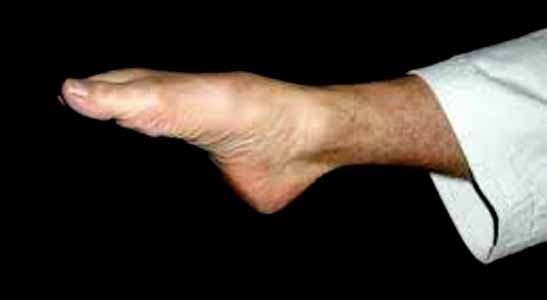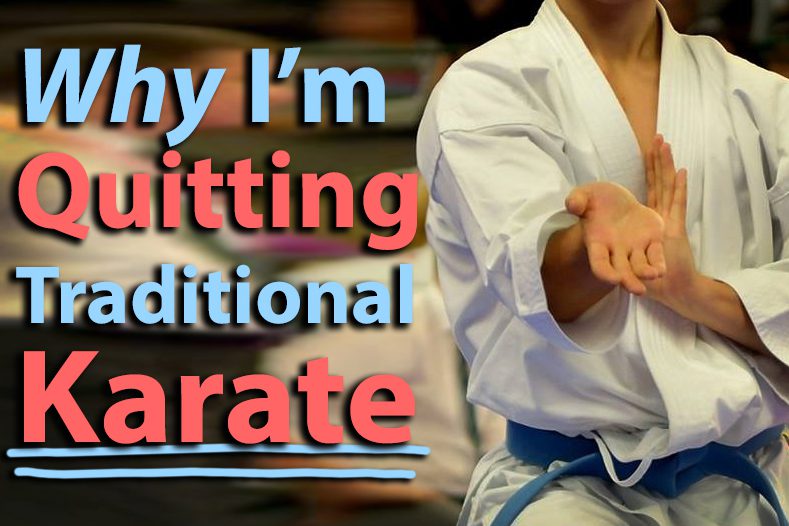Carefully read this quote:
“Hoping to see Karate included in the physical education taught in our public schools, I revised the kata to make them as simple as possible. Times change, the world changes, and obviously the martial arts must change too. The Karate that high school students practice today is not the same Karate that was practiced even as recently as ten years ago, and it is a long way indeed from the Karate I learned when I was a child in Okinawa.”
Wow.
The above statement was written in 1956 (!) by master Gichin Funakoshi.
As you probably know, Funakoshi was the founder of Shotokan Karate and widely regarded as one of the most influential pioneers of modern Karate.
Now consider this:
How many times have you found yourself thinking, “Man… this stuff would probably never work on the street” while learning a new kata?
You know, the disturbing feeling that maybe these moves were not really designed to kick anybody’s a** in a real fight?
If you are NOT a McDojo™ zombie, my guess is…

Many.
You see, stuff in Karate has been lost.
Techniques that seemed too dangerous, unorthodox or difficult during the historical transition of Karate from Okinawa to Japan and subsequently the rest of the world, were either changed or removed from modern Karate.
And if you ask me, it’s time we revive them.
So…
Today I’ve decided to share two of my favorite traditional, and pretty deadly, techniques of classical Okinawan Karate with you – straight from the birthplace of our beloved art.
These techniques are rarely seen in “modern” Karate today.
Don’t get me wrong though:
There’s a LOT of modern sport Karate in Okinawa too nowadays, and I actually competed myself when I lived there.
But once I opened my arms to embrace the historical awesomeness inherited in the technical registry of ancient Okinawan Karate, I gradually uncovered nuggets of old-school wisdom hidden in narrow alleys, inside secret dojos, run by unassuming masters who couldn’t care less about trophies, belts or accolades.
Stuff that was secret, deadly, and often pretty weird.
Stuff that I think every Karate Nerd™ should know today.
You ready?
Check it out:
#1: Boshi-ken – The Thumb Strike

The first Okinawan Karate technique you should know is called boshi-ken.
- “Boshi” literally means thumb.
- “Ken” means fist.
Hence, boshi-ken is a strike where you actually hit with the knuckle of your thumb.
Sounds crazy, I know.
But it’s incredibly effective.
There are two basic ways of doing boshi-ken. Their practical application will vary depending on the circumstances (target, location, angle etc.) as well as your skill level:
- The left, open hand version, was specifically designed to look like a harmless slap to the face for potential onlookers. In reality, however, it’s a vicious straight thumb strike in disguise; aimed at vital points (kyusho-jutsu) located on the torso, throat or face. Today this strike is primarily seen in Uechi-ryu Karate, where it’s still practiced as a fundamental self-defense technique.
- The right, closed fist version (sometimes known in Japanese as oya-yubi-ippon-ken), was designed to be used in a circular or sideways fashion, aiming at vital points located in the soft tissue of your opponent’s side or back/neck. For instance, this strike was originally what we today perform as three high blocks in kata Jion, where you actually aim at the back of your opponents neck with this exact boshi-ken strike. Isshin-ryu Karate is a style that still frequently utilizes this fist formation.
Additionally, the second version can be used as a “tui-di” technique (Jap. “tori-te”), where you apply pressure with the knuckle of your thumb to manipulate vital areas of your opponents anatomy in a grappling situation.
Cool, huh?
I suggest you try boshi-ken on your own body and palm before moving on to focus pads, a punching bag or live opponent(s).
Just don’t break your thumb!
Secondly…
#2: Tsumasaki-geri – The Toe Kick

Then we have a kick.
Tsumasaki geri, or “tip of the toe kick” as it’s generally translated in English, was the original version of today’s mae-geri (front kick) – but instead of kicking with the ball of the foot you actually use the tip of your big toe, often with the second toe added on top for support.
Just like boshi-ken, it sounds pretty dangerous…
Especially for the one executing it!
But that’s exactly why the old masters spent so many years hardening and conditioning their hands and feet.
(Obviously, they didn’t have shoes like we have today.)
Anyhow, tsumasaki-geri was the preferred style of kicking in ancient Okinawa, since its brutal effectiveness when aiming at vital points was flippin’ awesome, as made clear in numerous stories that survived from the olden days.
For instance, this one:
“In 1921, a young Karate master named Arakaki Ankichi was having a good time with some of his friends at a tea house in Tsuji, the notorious red-light district in Okinawa. While visiting the toilet, he accidentally bumped into a big man who insisted on picking a quarrel with him in the corridor on the second floor. Although he tried to ignore the man, Arakaki was unable to get out of his way and got shoved down the staircase.
Being in such good physical condition, however, Arakaki was able to roll down the stairs smoothly and avoided injury. The enraged man leaped down the stairs and grabbed Arakaki by the arm, trying to yank him up in an effort to punch his face in. Seizing the man’s arm with his free hand, Arakaki swiftly kicked his big toe into the armpit of the attacker, resulting in the man dropping to the ground like a sack of potatoes.
Here’s the scary part:
About six months later, while reading the newspaper one morning, Arakaki was shocked to see a story about a big wrestler who had died as a result of injuries sustained by “some Karate expert” at a tea house in Tsuji. In spite of the man allegedly dying as result from his encounter with Arakaki, the police were never called in.
Historians today suspect Arakaki’s tsumasaki-geri may actually have caused a traumatic pseudo-aneurysm, which would explain the delayed death.”
_______
Smash a cow!
If that doesn’t convince you to practice tsumasaki-geri, nothing will.
Nowadays, tsumasaki-geri is still used by several traditional Karate styles, and I actually once saw a small makiwara (wooden board stuck to the ground) designed specifically for practicing the tsumasaki-geri in a dojo in Okinawa.
It was disturbingly cute.
But I digress.
This wraps up my two forgotten, but super deadly, techniques of Okinawan Karate.
What do you think?
The cool thing about old techniques of Okinawan Karate is that they’re incredibly fun, difficult and deadly at the same time.
The perfect mix of pleasure and pain!
Now…
Share this article with friends who might find this interesting.
And then start practicing your two new techniques!
But don’t break any bones. ;- )
Good luck!



114 Comments